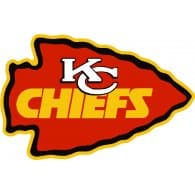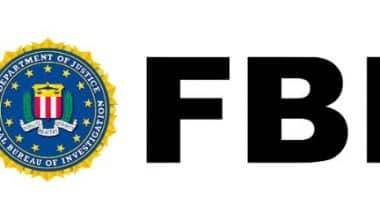The Kansas City Chiefs logo is one of the world’s most recognizable symbols. These logos, which are meant to make sports fans feel proud and loyal, are more than just pictures. Like political party logos, they are symbols of loyalty and passion.
Many of the most memorable sports logos have been in use for decades. Though certain colors and shapes may change over time, the overall aesthetic is likely to remain mostly consistent until a team relocates to a new location.
Today, we’ll take a look back at the history of the Kansas City Chiefs logo to see where it came from and what it means.
History of the Kansas City Chiefs Logo
The Kansas City Chiefs logo belongs to a national football league team that has been around for a while (since the 1960s).
The Kansas City Chiefs logo serves as the identifying symbol for the Kansas City professional football team. The team, which is now based in Kansas City, was founded in the 1960s by Lamar Hunt.
Initially, the team’s name was based on its original location in Dallas.
Lamar Hunt was battling for a professional football license in the NFL in 1959. When eight teams began to play in the 1960s, he decided to establish the American Football League as the solution and served as its first president.
Hunt founded his new team, the “Dallas Texans,” in his hometown (not associated with the previous Dallas Texans team).
The “Dallas Texans” were picked up and relocated to Kansas City in 1963, where they have renamed the Chiefs. Despite NFL competition, the Dallas Texans quickly established themselves as one of the top football teams in America, attracting the attention of countless fans.
The Chiefs are a hugely popular team in the modern football world, having won several championships and awards over the years. The Kansas City Chiefs franchise is one of the most powerful in the American Football League.
Many attributes Hunt’s role in negotiating an AFL-NFL collaboration with the Kansas City Chiefs to his association with the team.
The First Kansas City Chiefs Logo
The original Kansas City Chiefs logo was never intended for the Chiefs. This first icon, introduced in the 1960s, was created for the Dallas Texans, the original name of the popular football franchise. This Chief’s symbol was one of the most intricate in the team’s history.
The original Kansas City Chiefs logo depicted a running gunslinger wearing a broad-brimmed hat, holding a pigskin football in one hand and a gun in the other. The gunslinger was placed in front of a map of Texas, wearing cowboy boots and a short reading “Texans.”
The image was a little complicated, but it stuck with the Texans until 1963 when it was replaced with a new one that featured a Native American instead of a gunslinger.
This logo, like the previous one, featured a man running in front of a map-style image of Texas. The Native American still wore a pigskin under one arm, but the hand that had previously held the gun now held a small red axe.
The background state’s red was also replaced with a white and black outline.
The colors yellow and red were prominent in this new logo, which also featured an interlocking set of initials “KC” on the running man’s loincloth.
The logo, which was inspired by the old Chiefs logo, aimed to convey the team’s vigor and determination, as well as their agility and strength. This was the first original Kansas City Chief logo to feature the current KC Chiefs colors.
The background map showed Nebraska, Oklahoma, Missouri, Arkansas, and Iowa.
The Kansas City Chiefs Logo Today
The modern Kansas City Chiefs logo is much simpler than the old Kansas City Chiefs logo. The new Kansas City Chiefs logo, which debuted in 1972, did away with the running man entirely, as well as many other details, such as the background map image.
Instead, the emphasis was on a single shape and the KC Chiefs logo font, which featured two intertwining letters.
The new version of the logo almost completely disregards the team’s Native American heritage. The arrowhead design, which links back to the Native American imagery, is the only thing that remains from the previous image.
The simple arrowhead outline includes two letters in the middle, “K” and “C,” both in a bold serif font in red with black outlines. The use of bold elements in the outlines creates a three-dimensional effect.
There are several versions of the Chiefs’ font with interlocking letters available. Hunt is said to have sketched the C for the emblem back in 1963, when he was first coming up with ideas for the Chiefs’ logo.
Evolution Of The Kansas City Chiefs Logo
1960
Before the team’s first season, the logo featured a cowboy running with a gun in his hand. A red map could be seen in the background. The letter “Texans” across the cowboy’s chest reminded fans that the team was originally known as the Dallas Texans.
1963
The design was updated when the team adopted its current name. The Kansas City Chiefs’ logo now depicted a Native American running while holding a tomahawk. In the background, there was a white map.
1970
The design remained almost entirely unchanged. There were also a couple of minor changes.
1972
The Indian motif almost vanished from the emblem. Only the tip of the arrow with the letters “K” and “C” reminded me of it.
Elements of The Kansas City Chiefs Logo Design
The KC Chiefs symbol of today is a much simpler image than previous designs, and it is much more likely to appear on team merchandise.
Fans of the Kansas City Chiefs can now get their hands on a variety of branded items, ranging from 3-piece tailgate kits to throws to keep them warm in the winter.
The central colors of yellow/gold, red, white, and black – the shades often associated with the team – will be featured on virtually every KC Chiefs product.
As evidenced by current resources on the Kansas City Chief logo, the image hasn’t changed much since its redesign in the 1970s. There have been a few different logos in various colors and styles, but the main image has remained consistent.
The Kansas City logo includes the following elements:
Colors
The KC Chiefs logo is typically red, yellow, white, and black. As previously stated, there may be slight variations in shade and color use from one football season to the next. The KC Chiefs colors, on the other hand, will typically remain consistent.
Font
The KC logo’s font was inspired by the San Francisco 49ers, who also have an interlocking S and an F inside a shape. The typography is a bold serif font that is used in all capitals.
Some believe the C came from a design Hunt doodled while brainstorming ideas in the 1960s.
Shape
The interlocking cherry-red “KC” inside a white arrowhead-like figure is now the Chiefs logo. The contour of the arrowhead is black and chipped.
Symbol of the Kansas City Chiefs
The Kansas City Chiefs logo features an arrowhead, which is often drawn as a thin black-and-white outline with letters placed on top. This logo was also created by the team’s founder, who drew the arrowhead on a napkin on his way back to Kansas City.
Who is the owner of the Kansas City Chiefs?
The Kansas City Chiefs football club is owned by the family of Lamar Hunt, a well-known businessman in the United States. Hunt was born in 1932 and died in 2006, leaving the sports club to his family.
Where can I find the Kansas City Chiefs?
The Kansas City Chiefs football club is headquartered in Kansas City, Missouri, and the club’s arena is also in the same city. Arrowhead Stadium is the home stadium of the Kansas City Chiefs.
How the Kansas City Chiefs got their Name and Why it’s so Divisive
Tomahawk chops are unavoidable on an average NFL Sunday at Arrowhead Stadium in Kansas City. Perhaps some Native American headdresses would be appropriate.
The stadium is home to the Kansas City Chiefs of the National Football League, one of several American sports teams that use Native American imagery and traditions. The Chiefs’ customs and costumes are on full display as they prepare to take the field for Super Bowl LIV.
How did the team, which was founded in 1959, get such a long name? And why is this type of cultural appropriation still practiced?
The Origins of the Kansas City Chiefs’ Name
The Chiefs are named after a white man who impersonated Native American culture, which adds to the intrigue.
According to Vincent Schilling, a Mohawk journalist who has covered sports and writes about Native American culture, it all started with the Boy Scouts.
The Boy Scouts of America program, founded in 1925 by Harold Roe Bartle, includes the Tribe of Mic-O-Say.
According to Schilling’s research, Bartle was not a Native American but claimed to have been “inducted into a local tribute of the Arapaho people.” In his Mic-O-Say organization, Bartle was known as Chief Lone Bear and was known as “Lone Bear.”
Aside from being the mayor of Kansas City, Harold Roe Bartle, center, was a Boy Scout executive best known for founding the Tribe of Mic-O-Say honor program.
Bartle served two terms as mayor of Kansas City, Missouri, nearly 40 years after founding Mic-O-Say. Bartle, also known as “chief,” was instrumental in convincing Lamar Hunt, owner of the Dallas Texans football team, to relocate the team to Kansas City.
“Chiefs” kept popping up as an option in name-the-team competitions in relation to Bartle.
As a result, they went with it.
Why Is It A Problem?
It appears to be a simple, original story. But, according to Schilling, it’s what’s associated with the Chiefs’ name that bothers him and many others, such as the tomahawk chop or the headdresses fans frequently wear to games. Each game begins with a cheerleader riding a horse named Warpaint and striking a massive, native-style drum emblazoned with the team’s logo.
Some have claimed that these actions are in honor of Native Americans, but Schilling is skeptical. He tells CNN that such excuses remind him of his grandmother, a Mohawk woman who was kidnapped as a child and never spoke a word of Mohawk again out of sheer terror.
“My grandmother couldn’t even share who she was, but they can make a stereotype of her and tell me I should be honored by it?” says Schilling. “I’m sorry, but I’m just not going to be there.”
Of course, the Chiefs aren’t the only popular sports team that uses Native American stereotypes. The Atlanta Braves and Cleveland Indians play in Major League Baseball. The Florida State Seminoles and the Washington Redskins are both college and professional football teams. The Atlanta Braves, Florida State Seminoles, and Kansas City Chiefs all use the tomahawk chop during games and as an enduring part of their fan culture. The chop is made up of a motion and a chant that activists have criticized for stereotyping Native culture.
Mascots Dehumanize Native Americans, According to One Group
Images of Native Americans as mascots date back to the golden age of film, according to Schilling. Native American stereotypes as “savages,” stories about killing settlers, and so on became popular and profitable. As a result, they continued to be manufactured.
“And television is where we learn the most,” he added.
Native American characters are underrepresented in the media we consume. According to IllumiNative, a nonprofit dedicated to increasing the visibility of native people in society, only about 0.4% of characters depicted on prime-time TV and popular movies are Native American. When people are presented with such limited perceptions, racist and stereotypical depictions of their native neighbors may be all some Americans know.
According to Crystal Echo Hawk, executive director of IllumiNative, many schools do not teach about Native Americans after 1900.
This lack of representation – in pop culture, education, and the broader American consciousness – has the potential to erase Native American people and experiences.
According to Echo Hawk, “Americans tend to think of Native Americans as people living in a bygone era.” Many people are unaware of the complexities of indigenous peoples in the twenty-first century.
“It dehumanizes native people,” she said. “They can’t see us as fully formed, multidimensional people.”
What Are The Consequences?
As Echo Hawk pointed out, imagine if fans supported their team while dressed in blackface. There would be uproar. Nonetheless, many people overlook redface or the wearing of headdresses.
This cultural blindness can have long-term consequences. The American Psychological Association issued a resolution in 2005 calling for the abolition of Native American mascots.
“These mascots teach stereotypical, misleading, and frequently insulting images of American Indians,” said former APA president Ronald F. Levant in a statement. “These negative lessons do not affect only American Indian students; they send the wrong message to all students.”
In 2013, the National Congress of American Indians issued a 29-page report calling for the abolition of racism in sports and the use of native sports mascots. The report discussed the negative effects of native caricatures in no uncertain terms.
According to the report, “widely consumed images of Native American stereotypes in commercial and educational environments slander, defame, and vilify Native peoples, Native cultures, and tribal nations, and perpetuate a legacy of racist and prejudiced attitudes.”
“The’savage’ and ‘clownish’ caricatures used by sports teams with ‘Indian’ mascots, in particular, contribute to the savage image of Native peoples and the myth that Native peoples are an ethnic group ‘frozen in history.'”
What Teams are Doing to Address It
This type of cultural change can be difficult to implement. Professional sports teams earn billions of dollars and have millions of devoted fans who are adamant about preserving their team’s icons and traditions, no matter how problematic.
Change does occur, albeit in small, halting increments. The Atlanta Braves changed the way they featured the famous Tomahawk Chop during the 2019 MLB postseason after an opposing player complained. In 2018, the Cleveland Indians announced that all depictions of their cartoonish “Chief Wahoo” logo would be removed from official team uniforms (the caricature still appears on fan gear and other items).
College sports has been on the cutting edge of this issue. In 2005, the NCAA, which governs college athletics, implemented a policy prohibiting schools from using “hostile and abusive racial/ethnic/national origin mascots, nicknames, or imagery” at NCAA championships. The association named schools specifically with Native American imagery and references.
Despite the research and the protests of many Native Americans, these customs – racist names, fan behavior – persist.
And on Sunday, when millions tune in to watch the Super Bowl and 65,000 people pack into Miami’s Hard Rock Stadium, it will all be on display: tomahawk chops, regalia, headdresses, and face paint.
Vincent Schilling says he respects Chiefs fans and believes they have the right to do so. He’s not so sure about the message it’ll send on football’s biggest stage.
“I’m really, really worried about how this will turn out,” he said.
Interesting Facts About Kansas City Chiefs
The Kansas City Chiefs are one of the NFL’s more dependable teams right now, having previously appeared in two Super Bowls and won numerous divisions.
The team debuted in professional football in 1960 and has been a member of the NFL since the 1970 season. The AFC West Division of the National Football League currently includes the Los Angeles Chargers, Denver Broncos, Las Vegas Raiders, and Kansas City Chiefs.
The following are some interesting facts about the Kansas City Chiefs.
#1. When the team first entered the NFL, it was known as the Dallas Texans.
The Dallas Texans were founded in 1960 by billionaire Lamar Hunt as one of the first teams in the American Football League. (AFL).
Hunt relocated the team to Kansas City in 1963 and renamed them the “Chiefs,” effectively ending the franchise’s tenure in Dallas. As a result of the AFL-NFL merger in 1970, the Kansas City Chiefs became one of the new clubs in the National Football League.
#2. The Kansas City Chiefs went the longest time without winning a championship in NFL history.
With their 31-20 victory over the San Francisco 49ers in Super Bowl 54, the Kansas City Chiefs won the Lombardi Trophy for the first time since defeating the Minnesota Vikings by a score of 23-7 in Super Bowl 4. One of the game’s most prestigious teams hasn’t won a Super Bowl in 50 years, the longest drought in NFL history.
#3. Derrick Thomas, a former Kansas City Chiefs player, holds the NFL record for most sacks in a single game.
Derrick Thomas of the Kansas City Chiefs made NFL history in 1990 when he sacked Seattle Seahawks quarterback Dave Krieg seven times in a single game. Despite Thomas and the Chiefs’ outstanding defense, the Kansas City Chiefs were defeated by the Seattle Seahawks 17-16 that day.
#4. They aren’t even in the top half of the league in terms of value.
The Kansas City Chiefs are now one of the best NFL teams, but their value isn’t even in the top half of the league.
Forbes ranks the Chiefs as the 24th most valuable team, with a $2.3 billion valuation. As a result, they are only worth more than eight other teams. This Super Bowl appearance will undoubtedly help with that.
#5. The Kansas City Chiefs’ raucous fans are well-known.
The Kansas City Chiefs’ raucous fans are so well-known that they now hold the Guinness World Record for the loudest stadium crowd roar (142.2 dbA). It was accomplished when they played the New England Patriots in September 2014 and sacked quarterback Tom Brady.
#6. The Kansas City Chiefs have only played 31 postseason games.
Despite a history that dates back to 1960, the Kansas City Chiefs have only played in 31 playoff games and have a 12-19 overall record. They won five times between their first AFL championship in 1962 and their four subsequent Super Bowl appearances.
After 1970, the Chiefs won only seven more postseason games, and their losing streak lasted from 1970 to 1991.
#7. They have a medical doctor on their team.
If someone was injured, the Chiefs could use the offensive line instead of their medical staff, saving time and money. Laurent Duvernay-Tardif completed his medical education as a lineman for the team and will be the first doctor to compete in the NFL and, of course, the Super Bowl.
#8. Their lucky number could be 13.
Hank Stram, the first coach, was the Kansas City Chiefs head coach for the longest time in the team’s 13-year history.
Andy Reid, the current head coach, is in his seventh season in that position and has only missed the playoffs once in that time. Marty Schottenheimer was the team’s manager for ten years.
#9. Drafted the league’s first black middle linebacker.
Willie Lanier was drafted in the second round of the 1967 NFL Draft by the Kansas City Chiefs, and he went on to become the game’s first black middle linebacker.
He told Sports Illustrated that he is proud of his role in breaking down barriers and revolutionizing the position. He is a member of the Pro Football Hall of Fame and played for the Chiefs for 11 seasons.
#10. The Kansas City Chiefs have dominated the AFC West division.
The Kansas City Chiefs have dominated the AFC West for the past five seasons thanks to a 27-3 record against AFC West opponents since 2015. The AFL-NFL merger was the best five-year period for any club against their own division, and it helped them win many division titles.
#11. Participated in the first Super Bowl
Kansas City actually competed in the first Super Bowl, losing 35-10 to the Green Bay Packers. The Chiefs were representing the AFL in the first AFL-NFL World Championship Game. The game was played in 1967 in front of 61,000 fans in Los Angeles.
#12. They didn’t always refer to KC as “home.”
The Kansas City Chiefs did not begin in Kansas City. Their ancestors originated in Dallas, where they were known as the Texans. After the owner realized his team couldn’t compete with the already established Dallas Cowboys, the team relocated to Kansas City in 1963. They were only in Dallas for three seasons and have no ties to the current Houston Texans.
#13. All-Star Kelce
Ending on a cliff Travis Kelce is arguably the best tight end in the game today, and he set an NFL record this year by surpassing 1000 yards. That’s because he did it for the fourth consecutive season. Thus, making him the first tight end in NFL history to do so.
#14. The quarterback’s position
Patrick Mahomes is a quarterback of the generation. In just three short seasons, two of which he has been the starter, Mahomes has passed for over 9,000 yards and 75 touchdowns in just 30 games, making him the fastest player in NFL history to do so.
#15. Always present on the field
Offensive tackles don’t get much attention. However, Chiefs tackle Mitchell Schwartz should, as he continues to show up to work and grind out games. His 128-game streak continues, tying him for the second-longest in league history with quarterback Russell Wilson. He still has a long way to go to break Philip Rivers’ 224-game winning streak.
#16. All-Time Scoring Leader
Another placekicker is the Chiefs’ all-time leading scorer. From 1980 to 1993, Nick Lowery was the Chiefs’ kicker, scoring 1,466 points during that time. It helps that kickers are given numerous opportunities and must account for field goals and extra points in their total. The number of kicks he made is still impressive.
#17. Prior to The Wolf
Prior to adopting K.C. Wolf as their mascot in 1989, the Kansas City Chiefs mascot was Warpaint. The Warpaint is a horse ridden by a man wearing a full native chief headdress. That kind of mascot probably wouldn’t fly today, especially given the Washington Redskins’ name controversy.
#18. Trumpeter
Tony DiPardo, the team’s trumpet player and a member of the Zing Band, who performed live music at every Chiefs game between 1963 and 2008, was another notable face at Kansas City games. He even got himself a Super Bowl ring for the team’s Super Bowl 4 victory. He passed away in 2011 at the age of 98.
Why Is KC Not In Kansas?
Kansas City was founded before Kansas was a state. So, it was not named after it; instead, it was named after a tribe or the Missouri River.
What is the history of the Kansas City Chiefs logo?
The Kansas City Chiefs logo has a rich history, with roots dating back to the team’s founding in 1960. Over the years, the logo has undergone several changes, with the most recent update occurring in 1989. The current logo features an arrowhead with a stylized “KC” inside, surrounded by a circle and the team name.
What is the meaning behind the Kansas City Chiefs logo?
The arrowhead in the Kansas City Chiefs logo symbolizes the proud heritage and Native American culture of the region. The stylized “KC” represents the team’s location in Kansas City, while the surrounding circle and team name help to establish a strong brand identity. The logo is meant to evoke a sense of pride and strength, reflecting the team’s commitment to excellence on and off the field.
What role has the Kansas City Chiefs logo played in the team’s success and popularity?
The Kansas City Chiefs logo has been a key part of the team’s success and popularity, serving as a symbol of pride and unity for fans and players alike. The logo’s bold design and distinctive imagery have helped to establish a strong emotional connection with fans, and it has become synonymous with the team’s winning tradition. Whether on game day or in promotional materials, the logo helps to build excitement and encourage support for the team.
How does the Kansas City Chiefs logo reflect the team’s values and image?
The Kansas City Chiefs logo reflects the team’s values and image in several ways, including its bold and distinctive design, its connection to the proud heritage of the region, and its association with excellence and winning. The logo’s timeless design and lasting appeal have helped to establish the team’s reputation as one of the NFL’s most successful franchises, and it continues to be a source of pride and inspiration for fans and players alike.
How has the Kansas City Chiefs logo been used in advertising and promotional campaigns?
The Kansas City Chiefs logo has been used in a variety of advertising and promotional campaigns over the years, including product launches, special events, and marketing initiatives. The logo has been featured in television and print advertisements, as well as on billboards, brochures, and other promotional materials. The team also often partners with other organizations to promote its brand and support its community, using the logo as a symbol of its commitment to excellence and success.
In Conclusion
From the iconic arrowhead to the memorable Kansas City Chiefs team colors, the KC Chiefs design has captured the hearts and minds of sports fans all over the world.
The Kansas City Chiefs logo is simple and effective, conjuring up images of Native Americans without being overt. In comparison to the original logo, the more modern 1970s emblem is much easier to remember. It is also far more suited to the evolving sports space.
Related Articles
- Chief of Staff (COS): Job Description, Skills & Salary In US
- KANSAS SMALL BUSINESS GRANTS: TOP 2023 FUNDING OPPORTUNITIES IN KANSAS
- Trade School: Definition and 15 Best Trade School Jobs
- DALLAS COWBOYS LOGO: Why is Dallas Cowboy Logo a Star? (Detailed Guide).
- NATIVE AMERICAN SMALL BUSINESS GRANTS Listings In 2023 Updated!!! (The Top 15)






